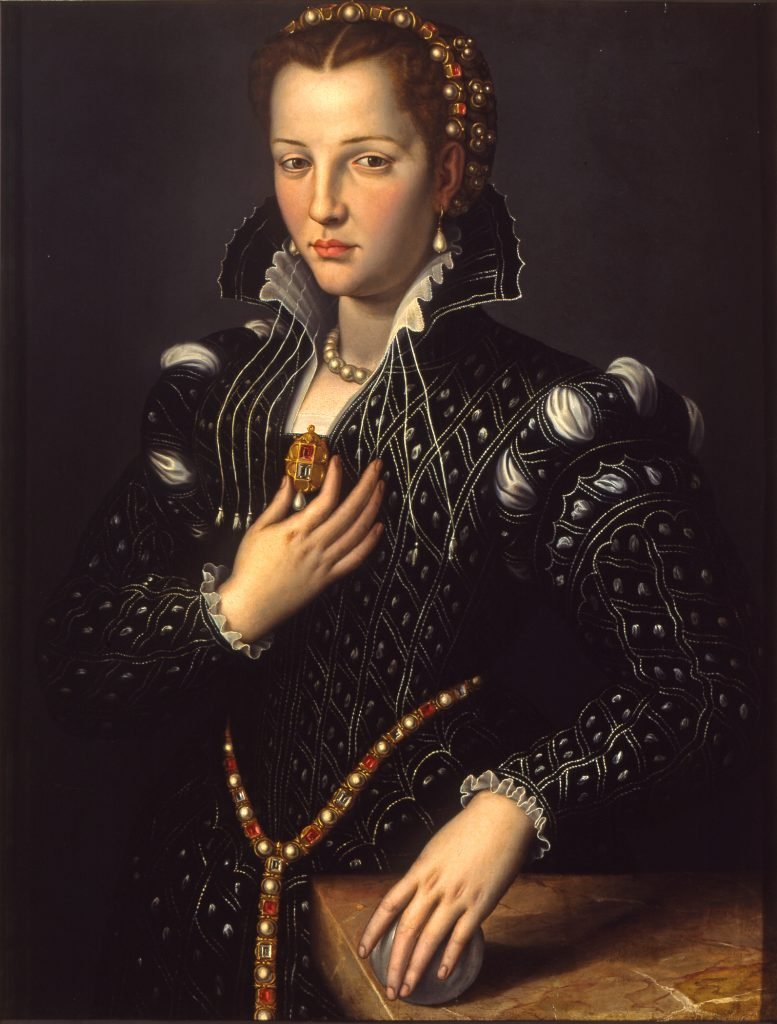“The Marriage Portrait”
By Maggie O’Farrell
$28.00
352 pages
Alfred A. Knopf
The Murder of a Teenaged Bride
by Fran Withrow 11.2022
I was captivated last year when I read Maggie O’Farrell’s book, “Hamnet,” a fictional account of the short life of William Shakespeare’s son. Now she is out with another story from the same time period: “The Marriage Portrait.”
“The Marriage Portrait” centers around another tragically short life: that of Lucrezia de’ Medici (1545-1561). O’Farrell states in a historical note that Lucrezia was fifteen years old when she left her home in Florence, Italy to begin life as the wife of Alfonso, Duke of Ferrara. She died less than a year later. Though she was officially declared dead of natural causes, rumors persisted that she had been murdered by her husband.
Even though I knew the ending, I was transfixed by this novel. O’Farrell’s writing is just so supremely good. Lucrezia narrates her own story, and I felt great sympathy for her plight as a victim of her time period and its expectations for daughters of powerful men.
Lucrezia de’ Medici is the fifth child of Cosimo de’ Medici, wealthy ruler of Florence, and right off the bat she is different from her siblings. She doesn’t want to sit quietly, learning her lessons. She is fascinated by birds and trees. She touches the tiger her father keeps in a zoo in the lower regions of his palazzo without injury. She can draw and paint with remarkable skill.
But she is a girl, and girls of that time period are expected to marry at the whim of their fathers, who seek to use their daughters to strengthen alliances and cement their power. This is the fate that awaits Lucrezia.
When Lucrezia’s older sister, Maria, dies before she can wed the Duke of Ferrara, Lucrezia is offered in her stead. At first, her new husband seems kind and patient with his very young bride, but as the weeks go by, Lucrezia discovers that Alfonzo has a dark and sinister side. Aside from his cruelty, Lucrezia begins to realize she is but a pretty puppet for her husband, and, more importantly, the means for him to continue his dynasty.
O’Farrell’s writing style is exquisite: her sentences flow seamlessly one after the other, a delight to read. Details of Renaissance life are vividly recreated and effortlessly become part of the story. O’Farrell’s description of how Lucrezia is dressed for her wedding and for her marriage portrait are especially fascinating.
O’Farrell skillfully moves back and forth between the days in 1561 when Lucrezia realizes her husband means to kill her, and her 1545 birth and upbringing in Florence. As her past and present begin to merge, the reader can’t help but wish there is some way out for this young teenager who just wants to paint pictures.
Despite the fact that I knew her murder was looming, I emitted a squeak of surprise as I turned the last few pages. O’Farrell cleverly throws in a plot twist at the very end that I never saw coming. It is an ingenious closing to this remarkable book. I hope she returns to this fascinating time period with another novel soon. I’ll be waiting eagerly.

